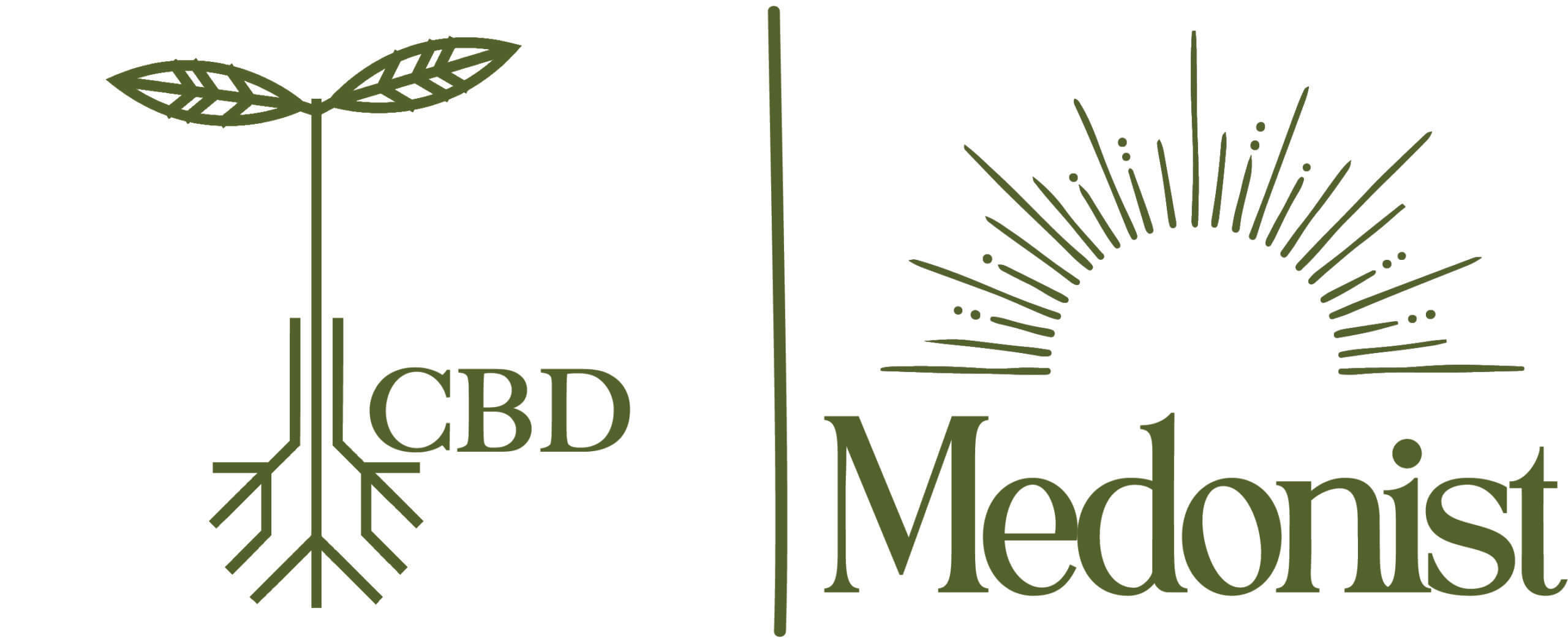MECHANISMS OF ACTION OF CANNABIDIOL (CBD)
Jared D. Hoffman, PhD
Cannabidiol (CBD) is one of the primary bioactive cannabinoids in the Cannabis sativaplant that has gained substantial interest in the lay press and scientific literature for its therapeutic potential. While the scientific literature on CBD is in the early stages in a variety of disease states, some benefits have been found in individuals with seizure disorders. Specifically, these studies were conducted in patients with Dravet syndrome and Lennox-Gastaut syndrome, two types of epilepsy.1Other research is being conducted in anxiety and other neurological disorders such as schizophrenia. Despite benefits being found in these disease states, there has yet to be conclusive evidence on the exact mechanisms of CBD. One reason for this is the number of bioactive compounds in the Cannabis plant that interact with one another. It is only more recently that CBD itself has become a focal point, but more research needs to be conducted to tease out all of its effects. This guide will discuss the mechanisms that we are currently aware of.
Firstly, for those readers who may be interested, a recent review by C. Michael White provides a fantastic table of a few of the known or hypothesized CBD mechanisms of action and their potential pharmacological outcomes.1 As an FYI, an agonist is a substance (e.g. CBD) that binds to and activates a receptor, producing a response. In contrast, an antagonist is a substance (e.g. CBD) that reduces or inhibits the action of a receptor by binding to and blocking it. Another review by Bih et al. in 2015 discussing the mechanisms of action of CBD found that CBD acts on 49% enzymes, 15% receptors, 15% ion channels, and 20% transporters.2 The scientific literature so far has looked at CBD for its roles in inflammation, pain relief, cancer, epilepsy, and improving cognitive function. In the following sections, the potential mechanisms of action will be briefly mentioned for each of these. An important note, the evidence on these mechanisms isn’t particularly strong yet and many of these are just hypothesized and have not yet been confirmed in biological conditions.
Anti-Inflammatory:
The anti-inflammatory effects of CBD have been attributed to its actions as an antagonist and inverse agonist to Cannabinoid Receptor 2 (CB2), an agonist to Transient Receptor Potential Vanilloid Receptor (TPVR-1), and its ability to enhance adenosine levels, which act on the adenosine A2A receptor.1 Notably, CBD was thought to act directly on the endocannabinoid system via Cannabinoid Receptor 1 (CB1) and CB2 but this may not actually be the case.2 CBD also appears to modulate the metabolism of arachidonoylethanolamide (AEA) by inhibiting its reuptake into cells and subsequent degradation. This is important as AEA is thought to be potentially anti-inflammatory.2, 3
Pain Relief:
The pain-relieving effects of CBD are potentially due to its actions as an agonist of the 5HT1- serotonin 1a receptor (5HT1-) and the aforementioned TPVR1.1Further, G-coupled Protein Receptor 55 (GPR55) has been implicated in producing pain and since CBD blocks GPR55 activity,4 it is plausible but not confirmed that this could be a mechanism of action for pain reduction. Other targets of CBD in the relief of pain include TRPV-1 and Transient Receptor Potential Ankyrin Type 1 (TRPA-1).1
Anti-Cancer:
So far, the anti-cancer effects of CBD have been proposed to be at least in part from its function as an antagonist to GPR55, which has been linked to cancer.5 Next, CBD appears to impact peroxisome proliferator-activated receptor (PPAR)γ by increasing its levels in a time-dependent manner, which have led to the decrease in tumor cell viability observed in one study by Ramer et al.6 This pathway may hold further importance in neurodegeneration.7 However, research is only in the very early stages of development in this area and has not yet been translated to humans.
Anti-Epileptic:
The anti-epileptic effects of CBD have been attributed to a variety of mechanisms. The first is CBD’s actions on TRPV-1 via increasing TRPV-1 mRNA and protein expression. Unfortunately, the biological effect of TRPV-1 is still inconclusive and some studies indicate the activation of TRPV-1 may actually be detrimental.2 Further, it is plausible that the actions of CBD on serotonin receptors and GPR55 could theoretically provide benefits in epilepsy as well but again, more evidence is needed to clarify these potential mechanisms. Further, the effect of CBD on increasing levels of adenosine may be the most likely mechanism behind it being an effective anticonvulsant.2, 8Finally, the inhibition of AEA into the cells for degradation may activate CB1 and thus, may be yet another way for CBD to act as an anticonvulsive agent.2
Improved Cognitive Function:
Many of the effects of CBD in the improvements in cognitive function have been attributed to modulation of the adenosine A2A receptor although studies have been contradictory.2 Next, one study found CBD to increase mitochondrial complexes and creatine kinase in the brains of rats, which may contribute to improvements in mood.2, 9 In neurodegenerative diseases, mitochondrial impairment is common so this may very well be an extremely important pathway. Going along with this, CBD has also been shown to increase electron transport chain activity, which is yet another mechanism for how CBD could impact brain health.9 Next, the aforementioned action of CBD reducing GPR55 may help decrease neuroinflammation by reduction of the calcineurin-NFAT pathway.10And finally, CBD may be able to act directly and indirectly as an antioxidant, reducing inflammation via its ability to scavenge reactive oxygen species.11
The mechanisms of action do not begin and end with these aforementioned effects nor do we know all the details on how much CBD is needed to activate/inhibit certain pathways. It is also possible other molecules may interact with CBD, impacting its function. However, it appears that these mechanisms of action overlap in different disease states indicating that these mechanisms are some of the strongest evidence on CBD currently known. Nevertheless, we need more research to be conducted to fully elucidate all of the effects of CBD.
References:
- White CM. A Review of Human Studies Assessing Cannabidiol’s (CBD) Therapeutic Actions and Potential. J. Clin. Pharmacol. 2019. doi: 10.1002/jcph.1387.
- Bih CI, Chen T, Nunn AVW, Bazelot M, Dallas M, and Whalley BJ. Molecular Targets of Cannabidiol in Neurological Disorders. Neurotherapeutics. 2015; 2(4): 699-730.
- Bisogno T, Hanus L, De Petrocellis L, et al. Molecular targets for cannabidiol and its synthetic analogues: effect on vanilloid VR1 receptors and on the cellular uptake and enzymatic hydrolysis of anandamide. Br J Pharmacol. 2001;134:845–852.
- Staton PC, Hatcher JP, Walker DJ, Morrison AD, Shapland EM, Hughes JP, Chong E, Mander PK, Green PJ, Billinton A, Fulleylove M, Lancaster HC, Smith JC, Bailey LT, Wise A, Brown AJ, Richardson JC, Chessell IP. The putative cannabinoid receptor GPR55 plays a role in mechanical hyperalgesia associated with inflammatory and neuropathic pain. Pain. 2008; 139(1):225-36.
- Hasenoehrl C, Feuersinger D, Sturm EM, Bärnthaler T, Heitzer E, Graf R, Grill M, Pichler M, Beck S, Butcher L, Thomas D, Ferreirós N, Schuligoi R, Schweiger C, Haybaeck J, Schicho R. G protein-couople receptor GPR55 promotes colorectal cancer and has opposing effects to cannabinoid receptor 1. Int J Cancer. 2018;142(1):121-132.
- Ramer R, Heinemann K, Merkord J, et al. COX-2 and PPAR-γ confer cannabidiol-induced apoptosis of human lung cancer cells. Mol Cancer Ther. 2013;12:69–82.
- Esposito G, Scuderi C, Valenza M, Togna G, Latina V, De Filippis D, Cipriano M, Carratu MR, Iuvone T, Steardo L. Cannabidiol reduces Aβ-induced neuroinflammation and promotes hippocampal neurogenesis through PPARγ involvement. PLoS One. 2011; 6(12):e28668.
- Devinsky O, Cilio MR, Cross H, Fernandez-Ruiz J, French J, Hill C, Katz R, Di Marzo V, Jutras-Aswad D, Notcutt WG, Martinez-Orgado J, Robson PJ, Rohrback BG, Thiele E, Whalley B, Friedman D. Cannabidiol: pharmacology and potential therapeutic role in epilepsy and other neuropsychiatric disorders. Epilepsia. 2014; 55(6):791-802.
- Valvassori SS, Bavaresco DV, Scaini G, et al. Acute and chronic administration of cannabidiol increases mitochondrial complex and creatine kinase activity in the rat brain. Rev Bras Psiquiatr. 2013;35:380–386.
- Abdul HM, Sama MA, Furman JL, Mathis DM, Beckett TL, Weidner AM, Patel ES, Baig I, Murphy MP, LeVine H 3rd, Kraner SD, Norris CM. Cognitive decline in Alzheimer’s disease is associated with selective changes in calcineurin/NFAT signaling. J Neurosci. 2009; 29(41):12957-69.
- Fernández-Ruiz J, Sagredo O, Pazos MR, García C, Pertwee R, Mechoulam R, Martínez-Orgado J. Review Cannabidiol for neurodegenerative disorders: important new clinical applications for this phytocannabinoid? Br J Clin Pharmacol. 2013; 75(2):323-33.
ALSO IN RESOURCES
CANNABIDIOL (CBD) FOR ATHLETICS
CANNABIDIOL (CBD) FOR ATHLETIC PERFORMANCEJared D. Hoffman, PhD Athletes, both professional and recreational, are always looking to gain an edge and push their performance in their respective sport to new levels. Often times, athletes will go to great lengths to do...
HOW TO DOSE CANNABIDIOL (CBD)
HOW TO DOSE CANNABIDIOL (CBD) Jared Hoffman, PHD Cannobidiol (CBD), a cannabinoid found in cannabis, is currently a hot topic among the general public and in the scientific community with new studies utilizing CBD in a variety of different disease states.1 Due to this...
CANNABIDIOL (CBD) FOR PTSD
CANNABIDIOL (CBD) FOR POST-TRAUMATIC STRESS DISORDERJared D. Hoffman, PhD Cannabidiol (CBD) is a non-psychotomimetic cannabinoid found in the Cannabis plant. CBD, along with tetrahydrocannabinol (THC), the well-known psychoactive component of Cannabis, are just two of...
838 E High St, Suite 268, Lexington Ky 40502
© 2019 On Duty CBD.
This product is not for use by or sale to persons under the age of 18. This product should be used only as directed on the label. It should not be used if you are pregnant or nursing. Consult with a physician before use if you have a serious medical condition or use prescription medications. A doctor’s advice should be sought before using this and any supplemental dietary product. All trademarks and copyrights are property of their respective owners and are not affiliated with nor do they endorse this product. These statements have not been evaluated by the FDA. This product is not intended to diagnose, treat, cure or prevent any disease. By using this site, you agree to follow the Privacy Policy and all Terms & Conditions printed on this site. Void Where Prohibited by Law.




